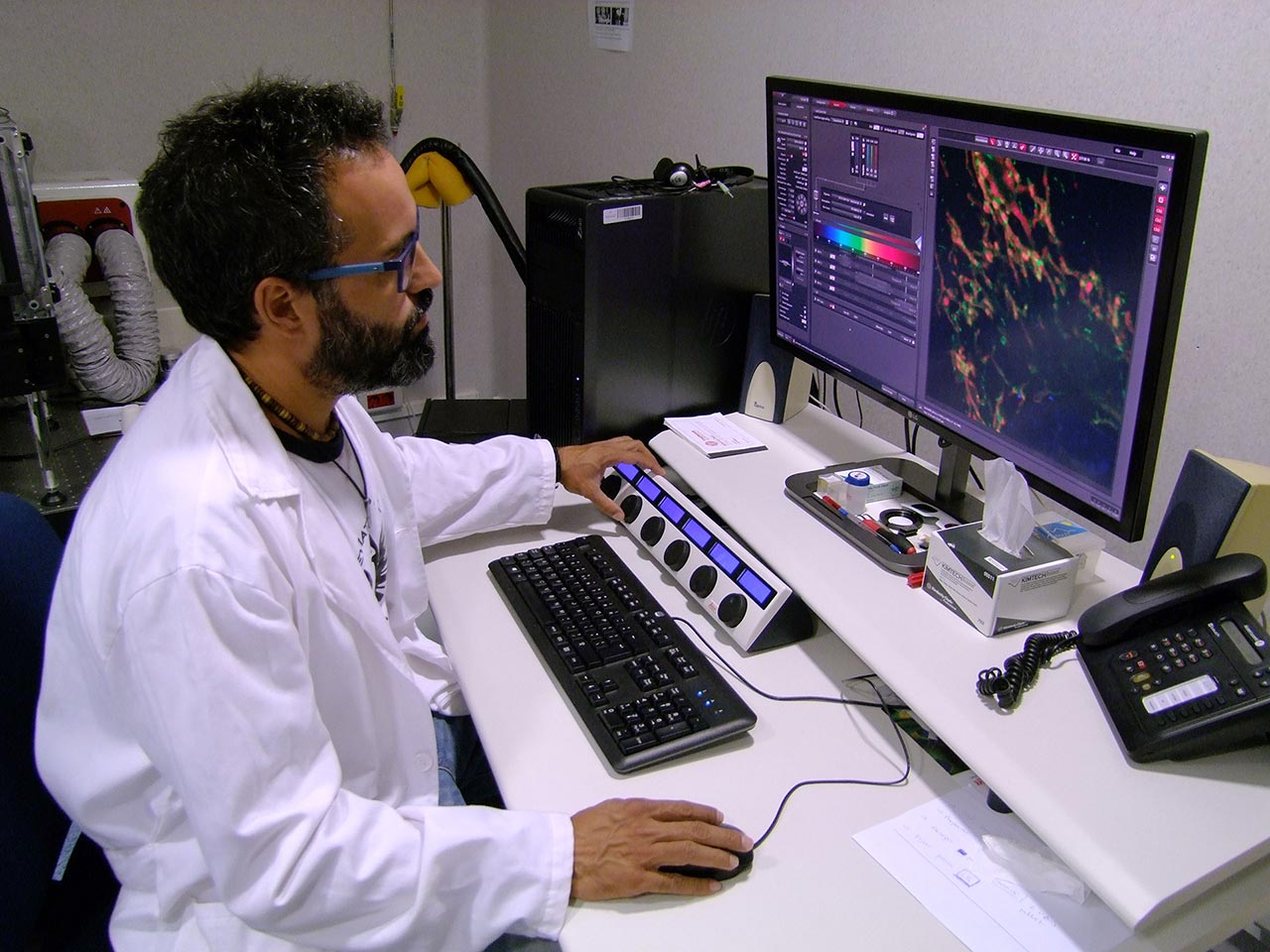
Advanced Light Microscopy
The goal of the CIPF Optical and Confocal Microscopy Service is to provide infrastructure and technical support to CIPF researchers and users from other research institutions and companies. The service offers different optical microscopy systems covering a wide range of applications for the observation and analysis of varying sample types including cells, tissues, and materials by:
- Fluorescence microscopy.
- Confocal and super-resolution microscopy.
- TIRF (total internal reflection fluorescence) microscopy.
- Live-cell microscopy.
- High-content screening confocal microscopy.
Furthermore, the service also provides software for image processing and results analysis.
- Equipment and Resources
- Services
- Confocal microscope (Leica TCS-SP8) equipped with 4 laser lines for fluorescence excitation (405 nm, 488 nm, 561 nm, and 638 nm), 4 detectors for simultaneous data acquisition, CO2 and temperature control, a resonant scanner for live-cell studies, high content screening automation (HCS A) module, and super-resolution module (HyVolution II).
- Confocal microscope (Leica TCS-SP2-AOBS) equipped with 9 laser lines (allowing fluorescent excitation from 405 nm to 633 nm), 4 detectors for simultaneous data acquisition, a CO2 and temperature control system for live-cell studies, and analysis software for fluorescence resonance energy transfer (FRET), fluorescence recovery after photobleaching (FRAP), and fluorescence lifetime imaging microscopy (FLIM).
- Inverted fluorescence microscope (Zeiss Apotome II), equipped with a flexible LED light source (Colibri 7) allowing excitation from 405 nm to 633 nm.
- Digital pathology research scanner (Leica Aperio Versa) for brightfield, fluorescence, and fluorescence in situ hybridization (FISH) imaging, equipped with a 200-slide autoloader to allow unsupervised batch processing—from low-magnification to high-resolution or oil-immersion scanning.
- Inverted fluorescence microscope (Leica DM6000B) equipped with a total internal reflection fluorescence (TIRF) system and a CO2 and temperature control system for live-cell studies.
- Upright fluorescence microscope (Leica DM6000B).
- Inverted fluorescence microscope (Leica DM6000B).
- Inverted fluorescence microscope (Zeiss Axiovert200M).
- MetaMorph® image analysis software.
- Sample collection and storage.
- Sample processing and fluorescent labeling for living and fixed cells (immunostaining).
- Data acquisition.
- Image processing.
- Technical advice.
Biomedical science:
- Fixed Cells:
- Immunocytochemical analysis.
- Co-localization protocols.
- Cellular growth on biomaterials.
- Protein interactions and conformational changes by fluorescence resonance energy transfer (FRET).
- Morphological and co-localization studies by 4Pi microscopy.
- Live Cells:
- Cytotoxicity, mitochondrial activity changes, drug internalization, etc.
- Physiological mechanisms: cell communication, mobility of membrane components, protein interactions, conformational changes, etc., by fluorescence resonance energy transfer (FRET), fluorescence recovery after photobleaching (FRAP), or fluorescence loss in photobleaching (FLIP).
- Kinetic studies of intracellular ions: Ca+2, Na+, Mg+2, etc.
- Cell migration.
- Etc…
- Tissue:
- Immunohistochemical analysis.
- Co-localization protocols.
Materials science:
- Morphology and defect analysis in solids such as microelectronics, polymers, resins, minerals, ceramics, metals, etc., as well as the study of surface roughness profiles. These techniques are applicable to fields as diverse as engineering (quality control, corrosion analysis, etc.), paleontology, forensics, geology, implant dentistry, and bone analysis, among others.
- Volumetric analysis of fluid inclusions on hydrocarbons.
Food science:
- Microstructural characterization of foods.
Get in touch to find out more about our microscopy services:

Alberto Hernandez
ahernandez@cipf.es
963289680 ext. 5312



